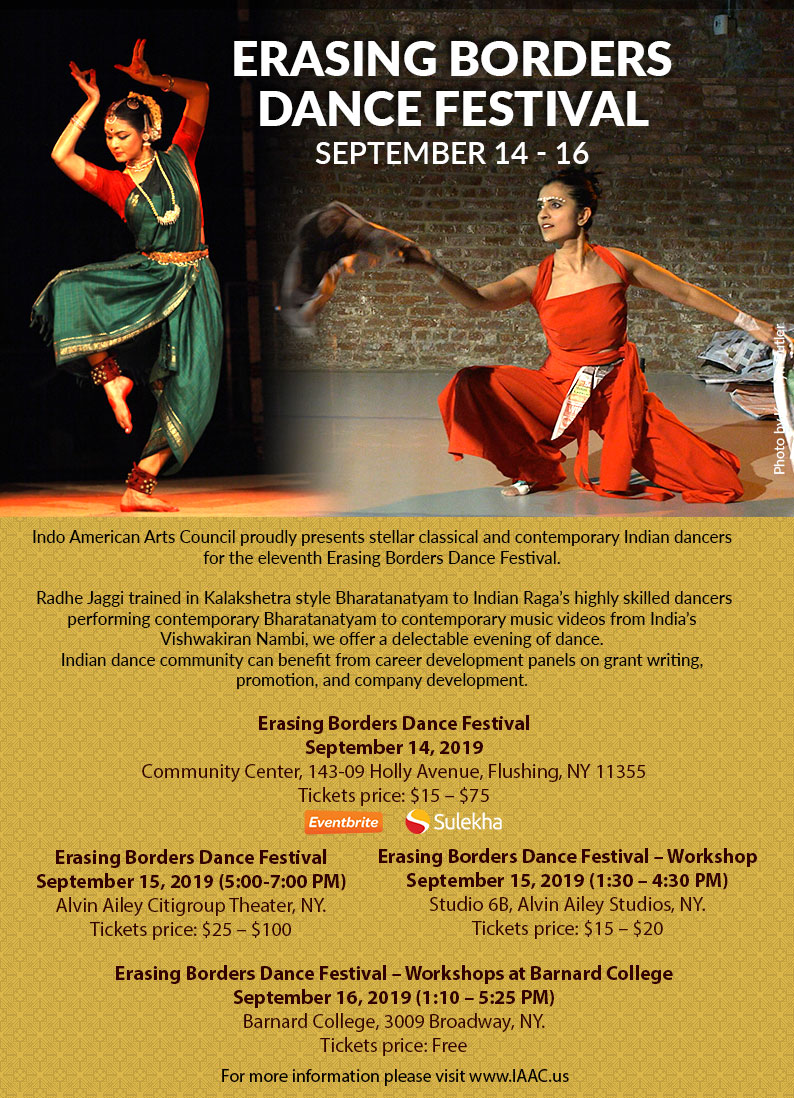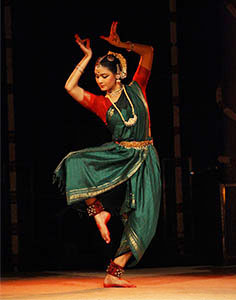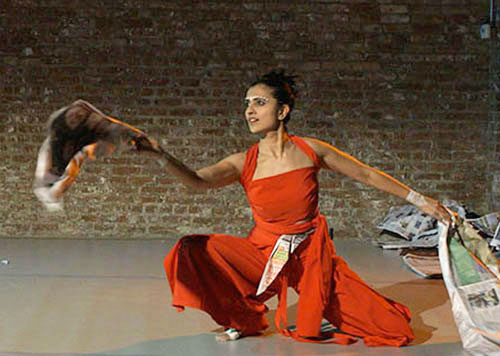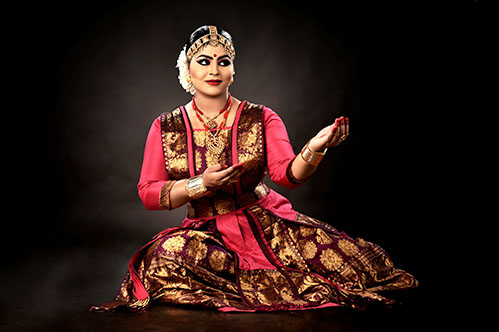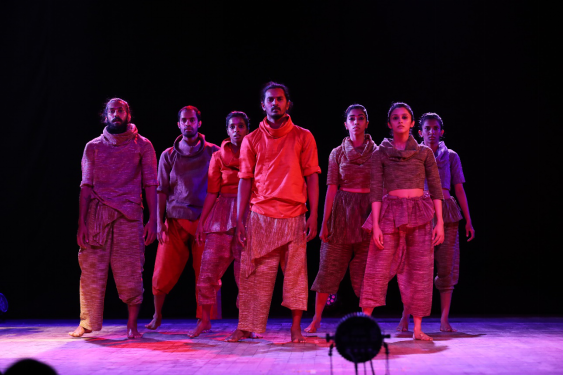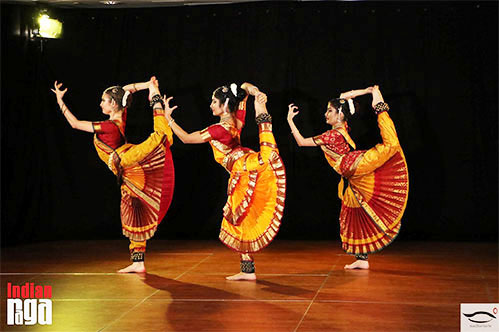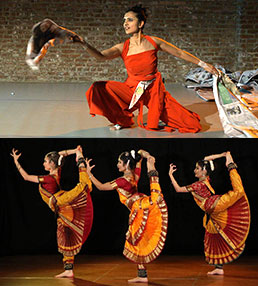
Erasing Borders Dance Festival

Curatorial Guidelines
We are only taking in digital applications this year.
You can submit solos, duets or larger groups.
Typically, an artist performs for 8-13 min.
Your video is the most important part of your application. An impressive video can catch the eye of the curator and make your performance memorable. When submitting a video, make sure the video is well-lit and appropriately edited for maximum impact. Below are some tips for editing your videos:
- The dancer should be clearly visible in the video.
- The video(s) you submit should be of the work that you propose to perform at the festival, and should reflect exactly what you will plan to perform that evening. In case the video exceeds the timing, please indicate time markers in your application for the segment/s you are proposing.
- You may submit up to 2 additional alternative videos with your application. Each video should follow ideally be less than 13 minutes.
- Dance works are often better appreciated when placed in context. We suggest that you include a commentary/explanation of process in the
Details of the Proposed Work
section of your application. - Live explanations (i.e. spoken commentaries on your video) will be counted as part of the timing of the total presentation, so you may prefer to send in a written explanation.
- The video you submit should be include the complete, continuous work you intend to perform, if selected. It is imperative for the curators to see the entire work, because our decision making involves thinking through how all the selected works (by different artists) will collectively form a unique, cohesive experience for our audience. An excerpt put together with bits and pieces from different parts of a work or different works WILL NOT BE ACCEPTABLE for the application.
paypal email: admin@iaac.us
ERASING BORDERS DANCE FESTIVAL
Dances & Choreographers Apply Now to Present Your Work at the 2019 Festival
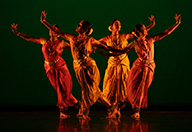
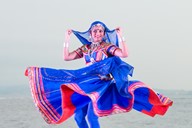
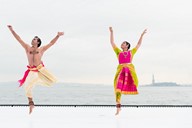
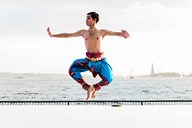
The Erasing Borders Dance Festival of The Indo-American Arts Council (IAAC) invites applications from dancers, dance companies and choreographers across the world to present works of artistic excellence sharing movement, heritage and inspiration from the Indian subcontinent. The festival is curated for the New York City public.
Deadline for applications: April 30th 2019
Festival date: Late September 2019
We are looking for:
- Exciting works and new voices from within traditional Indian dance.
- Original works in multiple or new vocabularies and forms deriving from or relating to the traditions of Indian dance.
- Works that are challenging or critically thinking on their own terms.
Professional works of 8-20 minutes duration (you can submit multiple works for us to consider).
Requirements:
- Completed Application Form, which will include a place for you to send us a link to the performance piece you want to showcase at the festival.
- Video: Applicants need to submit the entire video recording of the proposed works (not excerpts or sampling of past works).
- Only professional level performances will be considered for the festival.
- Non-refundable application fee of $20.
HOW TO SUBMIT:
We are only taking in digital applications this year.
- First, review the Curatorial Guidelines we have compiled. These guidelines will help you submit a strong application which catches the eye and interest of our curators.
- Next, complete your application form. Bear in mind that you will not be able to save your application and come back to it later. So, it is recommended that you first draft your answers in a separate document, and then enter them on this online form in one sitting.
- Pay your $20 application fee through PayPal
 (using any credit card) Click here >>
(using any credit card) Click here >> - If you have any questions, check the Frequently Asked Question (FAQ). We keep updating this FAQ as new questions are received. If the FAQ does not address your questions, you can email us via this Inquiry form. Please note that we will only respond to questions that have not been addressed in the FAQ, so make sure to check the FAQ first!
- New policy due to unforeseen circumstances: Invited dancers are requested to organize their own visas and airfares to the Erasing Borders Festival of Indian Dance 2019.
Indo American Art Council proudly presents stellar classical and contemporary Indian dancers for the eleventh Erasing Borders Dance Festival.
Radhe Jaggi trained in Kalakshetra style Bharatanatyam to Indian Raga’s highly skilled dancers performing contemporary Bharatanatyam to contemporary music videos from India’s Vishwakiran Nambi, we offer a delectable evening of dance.
Indian dance community can benefit from career development panels on grant writing, promotion, and company development.
Sept 14, 2019 - Performance
Community Center, 143-09 Holly Avenue, Flushing, NY 11355
Performance Lineup
Buy Ticket(Eventbrite) Or Buy Ticket(Sulekha)
-
7:00-9:00 PM
- Radhe Jaggi (Bharatanatyam): Sankara Srigiri
- Parijat Desai (Contemporary): Pardon My Heart
- Krishnakshi Kashyap (Sattriya): Rama Niranjana
- Vishwakiran Nambi Dance Company (Contemporary): Pyre
Sept 15, 2019 - Workshops
Studio 6B, Alvin Ailey Studios, 405 W 55th St, New York, NY 10019
Panels for Performance Professionalization
Buy Ticket
-
1:30-2:30 PM
Growing your company, Fundraising and Grants
Aparna Ramaswamy (Ragamala Dance Company), Nolini Baretto (Lower Manhattan Cultural Council)
-
2:30-3:00 PM
Tea and snack break
-
3:00-4:30 PM
Choreographing Narrative
Tamar RogoffBody Scripting: An approach to Choreography
Body scripting is my own investigative approach that connects my fascination with experiential anatomy to the process of making choreography and directing performance. This workshop will include learning this approach through guided improvisations and making your own body scripts/choreography.
Sept 15, 2019 - Performance
Alvin Ailey Citigroup Theatre, 405 W 55th St, New York, NY 10019
Erasing Borders Dance Festival in New York 2019
Buy Ticket
-
5:00-7:00 PM with Talk back to follow at the end
Performance line up
- Radhe Jaggi: Sankara Srigiri
His body smeared with ash, his third eyes shining upon his forehead, with a garland of skulls adorning his chest Shiva danced the Celestial Dance. The bells of his anklet resound while the sages and deities watch in wonder. Sankara Srigiri is a kriti describing the dance of Shiva in the Chit Sabha. He is accompanied on instruments by all the gods who have gathered to watch.
- Parijat Desai: Pardon My Heart
Pardon My Heart by Parijat Desai reimagines the lovelorn nayika. She talks to her heart, who answers back, and they dance out longing. Desai's choreography weaves together dance with recitation of contemporary verse by poet Marcus Jackson and Pakistani legend Faiz Ahmed Faiz, and with Hindustani thumri and tarana music.
- IndianRaga: Tradition in Transition: New-Age Bharatanatyam
IndianRaga's work seeks to prove that innovation and tradition are not mutually exclusive. “EDM Alarippu” uniquely pairs the well known Alarippu with electronic musical elements. Similarly, “Shiva Shambho” offers a new take on classical nritta, weaving in aspects of Shiva with intense footwork and dramatic poses. “Revelations” depicts a young woman’s struggle for her mother’s acceptance of her sexuality, while “Depression” exhibits the everyday struggle of living with mental illness. We see the future of Indian classical dance as highly relevant to the present day, and one that can transcend cultural, religious, and social boundaries.
- Krishnakshi Kashyap: (Sattriya): Rama Niranjana
Sattriya Dance has its origin in the ‘Sattras’ developed by the social, cultural and religious reformer Mahapurush Srimanta Sankardev in the 15th and the 16th century. 'Rama Niranjana' is an abhinaya (in italics) piece based on the 'Gunamala' , which is a scripture written by Mahapurush Srimanta Sankardev within one night at the request of Koch king Nara Narayan in 1552. It is an abridged version of the entire ten cantos of the 'Bhagawat Purana' where the poet recounts many incidents from Lord Krishna's life. This dance depicts instances of Lord Krishna’s life - the lifting of Govardhana parbat, Kaliya Domon and also depicts the ten incarnations of Lord Vishnu popularly known as the Dasavatar. This will be followed by showcasing two other specific dance types of Sattriya culture, the Ojapali and the Bhortal dance or the Cymbal dance.
- Vishwakiran Nambi Dance Company: (Contemporary): Pyre
Vishwakiran is a performer, choreographer, dance film-maker and dance academic, and is the Director of LOKA Studio for Movement Practices and the driving force behind Vishwakiran Nambi Dance Education (“VNDE”). Vishwakiran was the principal dancer, and head of training and one of the principal choreographers of 'Nritarutya Dance Company' for over 10 years. His training is diverse ranging from Indian classical forms to Indian folk and martial dance forms. Though his foundation is in contemporary dance and Bharatanatyam, he constantly trains and explores the folk dimensions of South Indian dance and trains extensively in martial forms. He has been a solo performer for over 5 years now and has choreographed and presented his solo 'Stone Unturned' at the prestigious ADA Rangamandira in Bangalore as part of ADHYAYA 2017. He has choreographed multiple short pieces for Nritarutya and has now moved forward to create his own repertoire.
- Radhe Jaggi: Sankara Srigiri
Sept 16, 2019 - Workshops
Barnard College, 3009 Broadway, New York, NY 10027

-
1:10-2:25 PM
Barnard post performance discussion on Dancing Identity/Dancing Indianness
All performers from Sept 15 will be involved -
4:10-5:25 PM
Post performance workshop.
With Radhe Jaggi (Kalakshetra bharatanatyam)
Sept 14, 2019 - Performance
Community Center, 143-09 Holly Avenue, Flushing, NY 11355
Erasing Borders Dance Festival in New York 2019
-
7:00-9:00 PM
Performance line up
- Radhe Jaggi: Sankara Srigiri
His body smeared with ash, his third eyes shining upon his forehead, with a garland of skulls adorning his chest Shiva danced the Celestial Dance. The bells of his anklet resound while the sages and deities watch in wonder. Sankara Srigiri is a kriti describing the dance of Shiva in the Chit Sabha. He is accompanied on instruments by all the gods who have gathered to watch.
- Parijat Desai: Pardon My Heart
Pardon My Heart by Parijat Desai reimagines the lovelorn nayika. She talks to her heart, who answers back, and they dance out longing. Desai's choreography weaves together dance with recitation of contemporary verse by poet Marcus Jackson and Pakistani legend Faiz Ahmed Faiz, and with Hindustani thumri and tarana music.
- Krishnakshi Kashyap (Sattriya): Rama Niranjana
Sattriya Dance has its origin in the ‘Sattras’ developed by the social, cultural and religious reformer Mahapurush Srimanta Sankardev in the 15th and the 16th century. 'Rama Niranjana' is an abhinaya (in italics) piece based on the 'Gunamala' , which is a scripture written by Mahapurush Srimanta Sankardev within one night at the request of Koch king Nara Narayan in 1552. It is an abridged version of the entire ten cantos of the 'Bhagawat Purana' where the poet recounts many incidents from Lord Krishna's life. This dance depicts instances of Lord Krishna’s life - the lifting of Govardhana parbat, Kaliya Domon and also depicts the ten incarnations of Lord Vishnu popularly known as the Dasavatar. This will be followed by showcasing two other specific dance types of Sattriya culture, the Ojapali and the Bhortal dance or the Cymbal dance.
- Vishwakiran Nambi Dance Company (Contemporary): Pyre
Vishwakiran is a performer, choreographer, dance film-maker and dance academic, and is the Director of LOKA Studio for Movement Practices and the driving force behind Vishwakiran Nambi Dance Education (“VNDE”). Vishwakiran was the principal dancer, and head of training and one of the principal choreographers of 'Nritarutya Dance Company' for over 10 years. His training is diverse ranging from Indian classical forms to Indian folk and martial dance forms. Though his foundation is in contemporary dance and Bharatanatyam, he constantly trains and explores the folk dimensions of South Indian dance and trains extensively in martial forms. He has been a solo performer for over 5 years now and has choreographed and presented his solo 'Stone Unturned' at the prestigious ADA Rangamandira in Bangalore as part of ADHYAYA 2017. He has choreographed multiple short pieces for Nritarutya and has now moved forward to create his own repertoire.
Sept 15, 2019 - Workshops
Studio 6B, Alvin Ailey Studios, 405 W 55th St, New York, NY 10019
Panels for Performance Professionalization
-
1:30-2:30 PM
Growing your company, Fundraising and Grants
- Aparna Ramaswamy: (Ragamala Dance Company)
Described as “rapturous and profound” by The New York Times, Aparna Ramaswamy is Co-Artistic Director of Ragamala Dance Company (with her mother, Ranee Ramaswamy). Through her performances, Aparna explores the dynamic tension between the ancestral and the contemporary, highlighting the fluidity between the secular and the spiritual, the human and the natural. Aparna’s is a senior disciple of the legendary Bharatanatyam dancer Padma Bhushan Smt. Alarmél Valli.
- Nolini Barretto: (Lower Manhattan Cultural Council)
Nolini Barretto has long been part of the New York arts community. She worked at the Martha Graham School of Contemporary Dance for 13 years, the last few years as Administrative Director of the school. She was the Director of Marketing for Dance Theater Workshop in Chelsea, helping it transition into its new building, managing its rebranding efforts and launching its Inaugural season. Nolini was originally a Chhau dancer in India and received a Master’s degree in Arts Administration from Teachers College, Columbia University. Nolini worked at the Lower Manhattan Cultural Council, where she founded the site-specific performance series, Sitelines, which she curated and produced for six years. Nolini served on the Bessies Committee (New York Dance and Performance Awards) from 2007 to 2014; and as a member of Dance Films Association’s Board of Directors from 2012 to 2018. Nolini was the Co-Curator of DFA’s Dance on Camera Festival at Lincoln Center in July 2019.
-
2:30-3:00 PM
Tea and snack break
-
3:00-4:30 PM
Choreographing Narrative
-
Tamar RogoffBody Scripting: An approach to Choreography
-
Sept 15, 2019 - Performance
Alvin Ailey Citigroup Theatre, 405 W 55th St, New York, NY 10019
Erasing Borders Dance Festival in New York 2019
- Radhe Jaggi: Sankara Srigiri
His body smeared with ash, his third eyes shining upon his forehead, with a garland of skulls adorning his chest Shiva danced the Celestial Dance. The bells of his anklet resound while the sages and deities watch in wonder. Sankara Srigiri is a kriti describing the dance of Shiva in the Chit Sabha. He is accompanied on instruments by all the gods who have gathered to watch.
- Parijat Desai: Pardon My Heart
Pardon My Heart by Parijat Desai reimagines the lovelorn nayika. She talks to her heart, who answers back, and they dance out longing. Desai's choreography weaves together dance with recitation of contemporary verse by poet Marcus Jackson and Pakistani legend Faiz Ahmed Faiz, and with Hindustani thumri and tarana music.
- IndianRaga: Tradition in Transition: New-Age Bharatanatyam
IndianRaga's work seeks to prove that innovation and tradition are not mutually exclusive. “EDM Alarippu” uniquely pairs the well known Alarippu with electronic musical elements. Similarly, “Shiva Shambho” offers a new take on classical nritta, weaving in aspects of Shiva with intense footwork and dramatic poses. “Revelations” depicts a young woman’s struggle for her mother’s acceptance of her sexuality, while “Depression” exhibits the everyday struggle of living with mental illness. We see the future of Indian classical dance as highly relevant to the present day, and one that can transcend cultural, religious, and social boundaries.
- Krishnakshi Kashyap (Sattriya): Rama Niranjana
Sattriya Dance has its origin in the ‘Sattras’ developed by the social, cultural and religious reformer Mahapurush Srimanta Sankardev in the 15th and the 16th century. 'Rama Niranjana' is an abhinaya (in italics) piece based on the 'Gunamala' , which is a scripture written by Mahapurush Srimanta Sankardev within one night at the request of Koch king Nara Narayan in 1552. It is an abridged version of the entire ten cantos of the 'Bhagawat Purana' where the poet recounts many incidents from Lord Krishna's life. This dance depicts instances of Lord Krishna’s life - the lifting of Govardhana parbat, Kaliya Domon and also depicts the ten incarnations of Lord Vishnu popularly known as the Dasavatar. This will be followed by showcasing two other specific dance types of Sattriya culture, the Ojapali and the Bhortal dance or the Cymbal dance.
- Vishwakiran Nambi Dance Company (Contemporary): Pyre
Vishwakiran is a performer, choreographer, dance film-maker and dance academic, and is the Director of LOKA Studio for Movement Practices and the driving force behind Vishwakiran Nambi Dance Education (“VNDE”). Vishwakiran was the principal dancer, and head of training and one of the principal choreographers of 'Nritarutya Dance Company' for over 10 years. His training is diverse ranging from Indian classical forms to Indian folk and martial dance forms. Though his foundation is in contemporary dance and Bharatanatyam, he constantly trains and explores the folk dimensions of South Indian dance and trains extensively in martial forms. He has been a solo performer for over 5 years now and has choreographed and presented his solo 'Stone Unturned' at the prestigious ADA Rangamandira in Bangalore as part of ADHYAYA 2017. He has choreographed multiple short pieces for Nritarutya and has now moved forward to create his own repertoire.
5:00-7:00 PM with Talk back to follow at the end
Performance line up
Sept 16, 2019 - Workshops
Barnard College, 3009 Broadway, New York, NY 10027
-
1:10-2:25 PM
Post performance discussion: Dancing Identity/Dancing Indianness
All performers from Sept 15 will be involved- Radhe Jaggi: Sankara Srigiri
- Parijat Desai: Pardon My Heart
- IndianRaga: Tradition in Transition: New-Age Bharatanatyam
-
4:10-5:25 PM
Post performance workshop.
-
With Radhe Jaggi (Kalakshetra bharatanatyam)
Radhe Jaggi: Sankara Srigiri
-
With Radhe Jaggi (Kalakshetra bharatanatyam)
Artists Bios
Krishnakshi Kashyap
Krishankshi is a performing artiste of Sattriya and Bharatanatyam – classical dance forms of India. A graded artiste of Sattriya Dance of Prasar Bharati, Doordarshan Kendra , Guwahati, she is also the recipient of Young Talent Artiste Award by NEZCC, Ministry of Culture, Govt Of India. Being trained in two classical dance forms of India, Bharatanatyam and Sattriya, she now engages herself in promotion and propagation of Sattriya Dance, the living tradition of Assam. Ms. Kashyap is the disciple of Sangeet Natak Akademi awardee Shri Ramkrishna Talukdar in Sattriya and is trained in Bharatanatyam under Sangeet Natak Akademi Awardee Smt Indira P P Bora.
Ms. Kashyap has extensively performed in various platforms across the nation, some of her distinguished performances are in: Nishagandhi Festival (Kerala) , Eeshanya (IGNCA, Bengaluru) Nalanda Festival (Mumbai), Uday Shankar Dance Festival (Kolkata) Bharatheeyam Festival (Kochi), Sparsh Purbottar (SNA, New Delhi), Malwa Festival (Indore) Vedvyas Sangeet Nrityotsav (Rourkela), Indrahanush Dilli (New Delhi) , IPAF (Kolkata), Nritya Milan ( New Delhi) , South Asian Youth Conference (Bangaluru) to name a few. Her finer lines been further enhanced with the constant guidance and untiring support of her guru Shri Ramkrishna Talukdar, she has also shared the stage with him in many prestigious platforms, thus establishing the true essence of the ‘Guru Shishya Parampara’ of the Indian classical dance and music world. Krishnakshi has been an active solo artiste and has been successful in making her place in the world of classical dance. Passionately engaged in promotion and propagation of Sattriya dance, the age old living tradition of Assam, Ms. Kashyap is also engaged with ‘Sattriyakristi’, an organization devoted in promotion of arts and performing artistes. Under her initiative 'Empowerment through Arts', she is engaged in the training of Sattriya Dance to promising underprivileged youths in India.
Parijat Desai
India-born, U.S.-raised choreographer/dancer Parijat Desai creates hybrids of contemporary, Indian classical and folk dance, theater, and other forms, crossing boundaries of nation, language, and identity through performance. The NYT wrote that Parijat “moves with lush attack,” and called her work “a seamless blending of new and old” . . . “a rejoinder, both physical and verbal, to the sentiment” of xenophobia. Parijat is a recipient of the 2019–20 LMCC Creative Engagement grant, and a finalist for the NYFA Artist Fellowship in Choreography. Parijat was also a member of Gibney’s 2018–19 Moving Toward Justice Cohort and an artist-in-residence through CUNY Dance Initiative. She also leads Dance In The Round—collective movement experiences based on circle dances from Gujarat, India—offering workshops for all ages and abilities.
Parijat’s first dance guru was Rathna Kumar (bharata natyam and kuchipudi), and she continued her training with Padmini Chari, C. P. and Shanta Dhananjayan, and Viji Prakash. Parijat holds a BA in cultural anthropology from Stanford University and an MFA in choreography from UCLA with professors Victoria Marks, David Rousseve, and Dana Reitz. Parijat has also studied ballet, modern, contemporary, improvisation, and yoga with various NYC, LA, and SF-based artists.
COMPANY
Parijat Desai began Parijat Desai Dance Company in 2000 in Los Angeles, then shifted bases to New York City in 2004. PDDC has performed at venues around the United States and in Canada and India including Danspace Project, Harlem Stage, and Asia Society (NYC); Skirball Cultural Center and the J. Paul Getty Center (LA); ODC Theater (SF), The Dance Centre (Vancouver), and National Centre for the Performing Arts (Mumbai). With Prakriti Foundation’s New Festival, PDDC toured to six cities across India. Parijat has collaborating with various dance artists, designers, and musicians—including leaders of the Brooklyn Raga Massive collective.Vishwakiran Nambi
Vishwakiran is a performer, choreographer, dance film-maker and dance academic, and is the Director of LOKA Studio for Movement Practices and the driving force behind Vishwakiran Nambi Dance Education (“VNDE”). Vishwakiran was the principal dancer, and head of training and one of the principal choreographers of 'Nritarutya Dance Company' for over 10 years. His training is diverse ranging from Indian classical forms to Indian folk and martial dance forms. Though his foundation is in contemporary dance and Bharatanatyam, he constantly trains and explores the folk dimensions of South Indian dance and trains extensively in martial forms. He has been a solo performer for over 5 years now and has choreographed and presented his solo 'Stone Unturned' at the prestigious ADA Rangamandira in Bangalore as part of ADHYAYA 2017. He has choreographed multiple short pieces for Nritarutya and has now moved forward to create his own repertoire.
Niranjan Harish
Niranjan is one of the lead dancers in ‘PYRE’. His primary training is in contemporary dance and is an expert in contact improvisation. His training extends in Somatic awareness by Michel Casanova and Annekatrin Trautman. He is also trained in several martial art forms like Kalaripayuttu, Kick boxing, and MMA. Niranjan is the lead dancer in Nritarutya Dance Company for over 4 years and has performed in several prestigious platforms in India and abroad. He is the lead in the trilingual music video 'Neeye', also lead in a Kannada feature film `Gudugudiya Sedi Nodu', now in the making.
Shreya Deshpande
Shreya, a professional Dancer and primarily a gymnast, trained for over 9 years from Sports Promotion Association and has represented the country several times. She is trained in contemporary dance for over 5 years at Attakkalari Centre for Movement Arts, trained in Kathak for 6 years from Abhinava Dance Company, Bangalore. She is featured as lead in several Music videos- the trilingual music video - 'Neeye, Neene, Neeve',Hit single Kangalin Oramai from the movie July Kaatril, official cover of the song Hamsanava ( Baahubali)- by the band Lagori. She has also performed in several prestigious events with several established companies, the likes of Nritarutya Dance Company, Abhinava Dance Company.
Sonal D’Souza
Sonal is one of the lead dancers in 'PYRE'. He is a contemporary artist works as an associate to Vishwakiran Nambi. He is also a Dance academic, currently teaching at Jyothi Nivas College. Sonal trained in contemporary dance for 2 years at 'Attakalari Centre for Movement Practices', was part of the 'Nritarutya youth wing' for a year and performed with the company at various prestigious platforms. He now trains at LOKA in contemporary dance, Bhararanatyam and Aerial Silk.
Jessiya George
Jessiya is trained primarily in Free-style, and is highly popular for the extreme athleticism that she brings to her dance. She is currently training in contemporary dance, Bharatanatyam and Aerial silk at LOKA Studio for Movement practices
Panelist and Curator Bios
Festival Committee and Panelists
Aparna Ramaswamy: Ragamala Dance Company
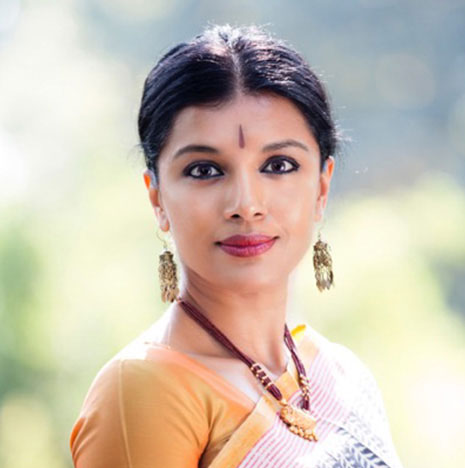
Described as “rapturous and profound” by The New York Times, Aparna Ramaswamy is Co-Artistic Director of Ragamala Dance Company (with her mother, Ranee Ramaswamy). Through her performances, Aparna explores the dynamic tension between the ancestral and the contemporary, highlighting the fluidity between the secular and the spiritual, the human and the natural. Aparna’s is a senior disciple of the legendary Bharatanatyam dancer Padma Bhushan Smt. Alarmél Valli.
Aparna's awards include a Guggenheim Fellowship, a Research Fellowship at the Rockefeller Foundation Bellagio Center (Italy), a Doris Duke Performing Artist Award, and a Joyce Award. She has been commissioned by Lincoln Center, Kennedy Center, Walker Art Center, American Dance Festival, and the Arts Center at NYU Abu Dhabi, and has been presented by the Joyce Theater, The Kennedy Center, The Music Academy (Chennai), and the National Centre for Performing Arts (Mumbai), among others.
Nolini Barretto
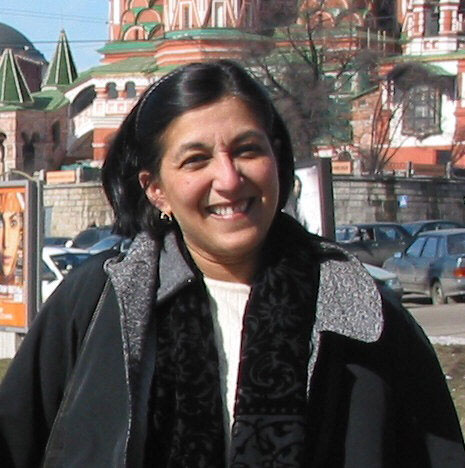
Nolini Barretto has long been part of the New York arts community. She worked at the Martha Graham School of Contemporary Dance for 13 years, the last few years as Administrative Director of the school. She was the Director of Marketing for Dance Theater Workshop in Chelsea, helping it transition into its new building, managing its rebranding efforts and launching its Inaugural season. Nolini was originally a Chhau dancer in India and received a Master’s degree in Arts Administration from Teachers College, Columbia University. Nolini worked at the Lower Manhattan Cultural Council, where she founded the site-specific performance series, Sitelines, which she curated and produced for six years. Nolini served on the Bessies Committee (New York Dance and Performance Awards) from 2007 to 2014; and as a member of Dance Films Association’s Board of Directors from 2012 to 2018. Nolini was the Co-Curator of DFA’s Dance on Camera Festival at Lincoln Center in July 2019.
Tamar Rogoff
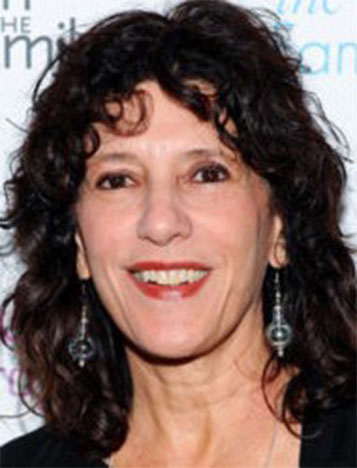
Tamar Rogoff is artistic director of Tamar Rogoff Performance Projects and does inclusive, multidisciplinary, multigenerational, and site-specific performance and film. She has developed body scripting, an experiential approach that informs her lifelong teaching and choreographic process. Rogoff reaches out to a variety of communities to find cast members who will represent the widest spectrum of experience. Early in her career she studied Bharata Natyam in Varanasi, India. Her work has been shown at P.S. 122, LaMaMa, Lincoln Center and abroad. Rogoff choreographed for Claire Danes at P.S. 122 and was her movement coach for HBO’s Temple Grandin. Rogoff’s films have been screened worldwide. She has been funded by the National Endowment for the Arts, Rockefeller MAP Grant, NYFA, Sundance, IFP and was awarded a Guggenheim Fellowship.
Committee and Curators
Deepsikha Chatterjee: Dance Director
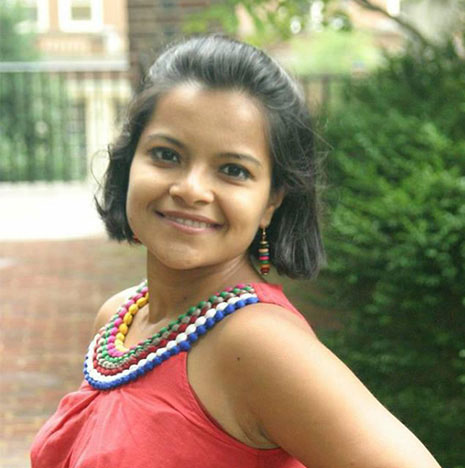
Deepsikha Chatterjee is a tenured faculty of Theatre at Hunter College CUNY where she enjoys teaching a diverse student body. She received her undergraduate degrees from University of Madras and National Institute of Fashion Technology before moving to the US for her MFA in Costume Design from Florida State University.Currently she is pursuing her PhD in Theatre and Performance from CUNY Graduate Center.Her costume design for Butoh Medea and Hide Your Fires received the Best Costume Design award at United Solo in 2014 and 2017 respectively. Her designs have been seen recently at Barnard College, Mabou Mines, Rattlestick Playwrights Theatre, Women’s Project, New York Musical Festival, Drive East, United Solo, Pan Asia Repertory, and Capital Fringe.
She researches costumes and masks for Indian performance and has received notable grants for this work. Her presentations have been seen at conferences including USITT, Costume Society of America, and the Rubin Museum of Art in New York City. She has published articles on Indian and Asian theatre, and Indian fashion. Since 2017 she has served as the dance director for Indo-American Arts Council’s Erasing Borders Dance Festival bringing international dancers to the New York stage.
Uttara Asha Coorlawala: Senior Curator
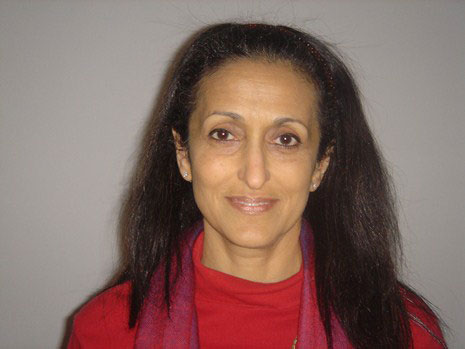
Uttara Asha Coorlawala currently teaches in the dance program at Barnard College/Columbia University and serves as Curator for Erasing Borders--the annual Festival Of Indian Dance. Had previously also taught at Alvin-Ailey- Fordham University Dance Program, Long Island University's C.W. Post Campus, and at Princeton University, NJ. Earlier as a dancer, her solo show, (1973-87) brought modern dance, BharataNatyam and yoga, to stages of India, Europe, East Europe, Japan and the United States. For her pioneering choreography she was recently awarded the Sangeet Natak Akademi national award. (India) Uttara also served on various global dance research (CORD) and educational (IB) Committees, and as Performing Arts advisor to the late Prime Minister Rajiv Gandhi, and at the National Center of Performing Arts, Mumbai.
Awards for writing include AHRB Fellowship for South Asian Dance Research, London, The Graduate Research Award from CORD, USA, the Homi Bhabha Fellowship, India, a Ford Foundation research project (USA) on changing demographies of cultures in the U.S. and an award to study choreography from the Asian Cultural Council.
Currently, she is even more invested in the ongoing global re-flows of body knowledges.
Parul Shah: Curator
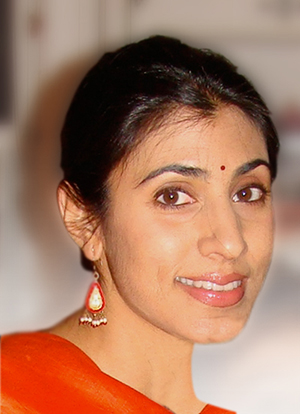
Artistic director, Parul Shah of the Parul Shah Dance Company is an internationally acclaimed Kathak and contemporary dancer and choreographer whose work is expanding the classical medium beyond cultural boundaries. With a dedication to excellence, Shah preserves the form’s aesthetic integrity while exploring contemporary stories and questions around belonging, identity, and empathy. Her work aims to create shared experiences and lasting connections between performers and audiences.
Sruthi Mohan: Curator
Sruthi Mohan is the Founder and Creative Director of Tat Tvam Asi, a boutique art organization in Austin, Texas, created specifically to curate and present works of internationally acclaimed Indian classical dancers touring the US.
An active and passionate community organizer, with more than a decade of organizational experience, she currently serves as the Cultural Committee Chair of the Austin Hindu Temple and has been instrumental in creating various cultural outreach initiatives that aim to showcase the spiritual beauty of Indian classical dance and other temple arts.
An accomplished and well trained classical dancer who started training at the age of three, she continues to perform to a diverse international audience. She also shares her passion for dance by writing about dance, appearing on radio and TV talk shows to promote and educate a wide and diverse audience about Indian Classical Dance.
Apart from being a dancer and a dance presenter she is also a Co curator for the Erasing Borders Festival of Indian Dance, New York.

